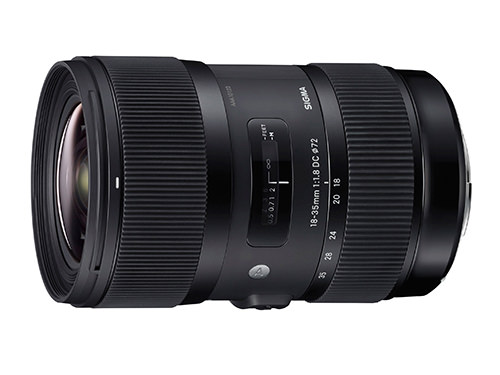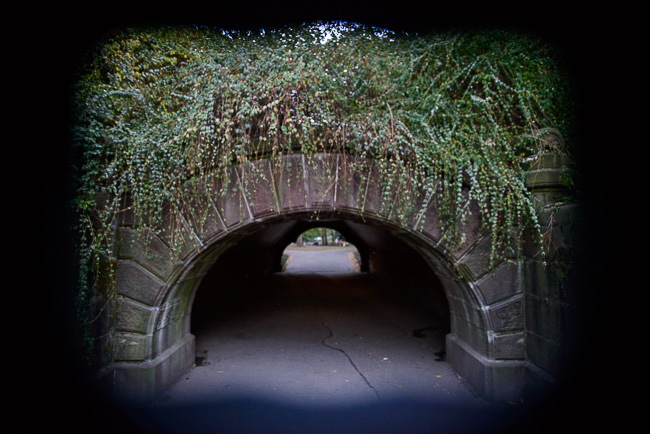Sigma 18-35mm F/18 Dc Hsm Art Lens for Nikon Review
This is an in-depth review of the Sigma eighteen-35mm f/1.8 DC HSM Fine art lens, world'due south first constant f/i.8 zoom lens for DSLR cameras that was announced in April of 2013. Despite the recent tendency of manufacturers to move their customer base to full-frame format, Sigma took a bold move and appear the professional-course Sigma 18-35mm f/one.viii Fine art for DX/APS-C format only. With a focal range equivalent to 27mm-52.5mm in 35mm format, the lens provides a skillful range to work with for a variety of dissimilar needs and applications. And with its fast constant aperture of f/1.8, the Sigma 18-35mm opens up opportunities to shoot in low-calorie-free situations, something that was previously just possible with fast aperture prime number lenses. Lastly, Sigma'southward pricing of $799 MSRP for the lens made information technology the meridian choice in terms of value when compared to pro-grade lenses such as the Nikon 17-55mm f/two.8G DX, which sells for nearly twice as much and does not offering the same low-light advantages.

The Sigma 18-35mm f/1.8 DC HCM is a technological marvel, because it is the starting time zoom lens in history with such a wide / fast discontinuity. On tiptop of that, Sigma used many loftier-end features and components that are usually only available on pro-form full-frame lenses. Kickoff, the lens comes with a hypersonic motor (HSM), which provides silent and fast autofocus.

Second, the lens has a very complex optical formula that consists of a total of 17 lens elements in 12 groups, with 4 aspherical and 5 low-dispersion elements. Third, information technology has a metal mountain and a thermally stable composite barrel, which offers greater elasticity than polycarbonate and offers minimal thermal shrinkage with exceptional hardness, something Sigma has only recently started providing on its new generation lenses. And lastly, beingness an "Art" series lens, information technology is fully compatible with Sigma'southward USB dock that allows micro-adjusting autofocus parameters.

Sigma 18-35mm f/1.eight DC HSM Art Specifications
- Available for Mounts: Sigma, Sony, Nikon, Pentax, Canon
- Focal length: 18-35mm
- Maximum aperture: f/1.8
- Minimum aperture: f/16
- Lens construction: 17 elements in 12 groups
- Angle of view: 76.5° – 44.two°
- Closest focusing distance: 28cm/11.0in.
- Maximum reproduction ratio: one:4.three
- No. of diaphragm blades: 9 (rounded)
- Filter/attachment size: 72mm
- Bore x length: 78mm 10 121mm / iii.1in. ten 4.8in.
- Weight: 810g/28.six oz.

Other technical information, including manufacturer-provided MTF chart can be found in the Sigma 18-35mm f/i.8 DC HSM folio from our lens database.
Lens Handling and Build
Sigma has put a lot of attempt into making the new generation lenses bonny both in terms of blueprint and function, and the Sigma 18-35mm is not an exception. Similar to the Sigma 35mm f/one.four Art, the lens gives a dissimilar sense of quality to information technology when compared to previous generation Sigma lenses. The craftsmanship of the lens is indeed first-class. Starting from the rugged brass mountain that smoothly connects with the metal barrel, to the shine rubber focus ring in the front, you won't get a feeling of a cheap lens that we are so accustomed to when usually dealing with APS-C/DX lenses. The metal barrel is made of a special Thermally Stable Composite material, which offers infrequent hardness, improve elasticity than polycarbonate and minimal thermal shrinkage. This basically means that the lens should easily withstand extremely hot and common cold temperatures without impairment or potential functioning degradation. While I could non test the lens in hot temperatures, I did take information technology out during a very cold morning when the temperatures peaked -5F (some of the snow images in the review were taken during that morning). The lens performed very well during and after the shoot, autofocus continued to role without any problems, and both zoom and focus rings operated smoothly without getting stuck. In curt, the build quality of the Sigma 18-35mm is outstanding. My only gripe is lack of a rubber gasket on the mount to foreclose dust and other debris from getting into the camera. For some reason, Sigma never includes one on its lenses, which is unfortunate.

The handling of the lens is also superb, although that tin depend on whether you lot are comfortable with a contrary rotation of the focus band. The zoom ring follows similar clock-wise rotation from short to long focal lengths as Nikon's DX lenses, but its focus band is reversed. So to move from shut focus to infinity, you would have to rotate the focus band counter clock-wise. Aside from this ergonomic difference, I have not seen any serious bug with handling (and Catechism users might prefer how the focus band works, because Canon lenses work the same way). Yes, the lens is indeed quite heavy at 810 grams, merely considering its fast speed, metallic construction and a total of 17 lens elements, I dubiety Sigma could have made information technology lighter. That said, information technology certainly does feel front end-heavy when mounted on lightweight DX cameras like Nikon D5300. At the same time, its long barrel actually makes it easier to residuum it out on lightweight photographic camera bodies when it is hand-held. The zoom ring is smoothen and has some nice resistance to it, while the focus band is also very smoothen, albeit with a little less resistance. Similar to many Nikkor lenses, at that place is a switch on the side of the butt that allows to move the lens from autofocus to manual focus performance. The eye portion of the barrel (which is nicely threaded underneath for better grip), along with the front part and the filter thread are plastic. Sigma probably decided to utilise the lighter cloth to subtract the weight of the lens. The supplied hood is also plastic and can be mounted regularly, or in opposite direction to relieve camera purse space. Once mounted on the lens, information technology stays secure and does non wobble.


Use on Full-Frame
Some DX / APS-C lenses are known to work quite well on total-frame cameras, with some vignetting that can exist removed in the corners (the Nikon 35mm f/1.8G is a practiced example of such lens). The Sigma 18-35mm f/ane.8G is not a proficient candidate to be mounted on a full-frame photographic camera, particularly at the shortest end of the focal length. Have a look at how the image turned out when I shot it at 18mm on the Nikon D800E:

When I saw the higher up, I inverse the setting on my Nikon D800E to switch to DX ingather mode when the lens was mounted on it.
Autofocus Performance and Accurateness
Cheers to the fast hypersonic motor, the lens acquires focus quickly and silently. I compared the AF speed of the Sigma 18-35mm f/1.8 to the Nikon 50mm f/1.8G and while the Nikon seemed to exist a tad faster, information technology was definitely noisier. Also, it is important to note that unlike older lenses that required cameras to accept a built-in autofocus motor, the Sigma 18-35mm has an integrated focus motor, which means that autofocus will work on entry-level cameras like Nikon D3300 and D5300. With lenses with built-in focus motors, you lot do not have to worry about buying a higher-terminate DSLR simply to be able to utilize autofocus anymore.

In terms of autofocus accuracy, the lens behaved rather unpredictably at times. While most of the images were in focus, sometimes the lens would simply reject to acquire correct focus on both the Nikon D5300 and the Nikon D800E (in DX crop style). And when the light conditions were less than ideal pressing the AF-ON button repeatedly to forcefulness the lens to reacquire focus would non help either. Occasionally, I would extend my hand at a close distance, force the lens to learn focus, then refocus on the field of study. I don't know if this has to do with Nikon firmware not playing well with Sigma, or if it is Sigma's AF motor that is unreliable, merely it certain was disappointing to take a shot only to observe out that the lens focused on the background. Utilizing the center focus indicate and using the focus and recompose technique in low-light and high-contrast situations seemed to yield better results.


franciscoknowarand.blogspot.com
Source: https://photographylife.com/reviews/sigma-18-35mm-f1-8
0 Response to "Sigma 18-35mm F/18 Dc Hsm Art Lens for Nikon Review"
Post a Comment